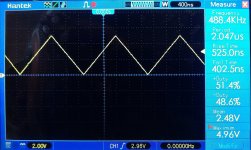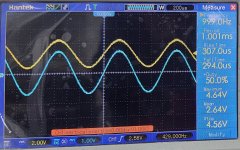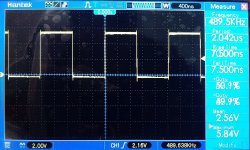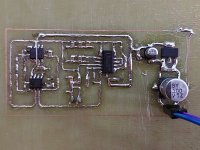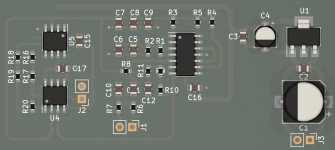Hi,
I am an undergraduate engineering student working on the design of a GaN-based class D amp as a graduation project, currently in the component testing and implementation stage. Topologically, the circuit design uses a clocked PWM at a switching frequency of 500 kHz. The 8 ohm loudspeaker will be differentially driven using a full bridge configuration with +100 Vdc supply voltage.
For the switching devices I am using LMG3422R030 GaN transistors capable of operating at a switching frequency of over 2 MHz (copy of the datasheet attached below). As part of the circuit design requirements for the given transistor, the PGND is functionally isolated from the AGND. Therefore, if we want to implement a feedback control system, the system itself would have to be isolated as it crosses from the PGND at the output back to the AGND at the input. For isolation, we are using ISO7731 digital isolators (copy of the datasheet attached below).
I am an undergraduate engineering student working on the design of a GaN-based class D amp as a graduation project, currently in the component testing and implementation stage. Topologically, the circuit design uses a clocked PWM at a switching frequency of 500 kHz. The 8 ohm loudspeaker will be differentially driven using a full bridge configuration with +100 Vdc supply voltage.
For the switching devices I am using LMG3422R030 GaN transistors capable of operating at a switching frequency of over 2 MHz (copy of the datasheet attached below). As part of the circuit design requirements for the given transistor, the PGND is functionally isolated from the AGND. Therefore, if we want to implement a feedback control system, the system itself would have to be isolated as it crosses from the PGND at the output back to the AGND at the input. For isolation, we are using ISO7731 digital isolators (copy of the datasheet attached below).
- To what extent does an omission of a feedback system have on the output signal in terms of THD and sound quality? Is it worth it?
- What methods are there to implement an isolated feedback control system, given that we have a single 5 V supply rail for the input stage
Attachments
H
HAYK
Over the last 10 years on this forum this topic has come up here in stages and keeps coming.
- Switching above 1MHz.
- PGND is functionally isolated from the AGND.
- Digital isolators.
- Omission of a feedback system can have a significant impact on the output signal in terms of THD and sound quality. A feedback system is designed to minimize distortion and maintain stability by continuously adjusting the amplifier's output based on the input signal. Without a feedback system, the amplifier is more prone to distortion, and the output signal may not accurately represent the input signal. Therefore, implementing a feedback system is generally considered essential for achieving high-quality audio output.
- There are several methods to implement an isolated feedback control system. One common technique is to use digital isolators, which use digital signals to transmit information across an isolation barrier, thus eliminating the need for a physical connection. Another technique is to use analog isolators, which use transformers or optocouplers to transmit signals across an isolation barrier. The choice of the isolation method will depend on the specific requirements of the application, including the required isolation voltage and bandwidth, as well as cost and complexity considerations.
I can recommend a couple of references that may help. The first is this very old (2007) presentation by Bruno Putzys, who designed the Hypex amps (and more recently Purifi). It has some good discussions around control loops and digs into the math involved. The second is this more recent paper by a group of Chinese researchers. There is an extensive list of references at the end of the paper.
I don't know of any Class D amplifiers which do not have feedback loops, and the good ones usually have multiple loops. Adding isolation to the loops is not likely to buy you much, IMHO, and may be detrimental. It really is about your circuit topology and PCB techniques used to manage ground currents and EMI.
I don't know of any Class D amplifiers which do not have feedback loops, and the good ones usually have multiple loops. Adding isolation to the loops is not likely to buy you much, IMHO, and may be detrimental. It really is about your circuit topology and PCB techniques used to manage ground currents and EMI.
- Home
- Amplifiers
- Class D
- Inquiries on Class D Amplifier Isolated Feedback
